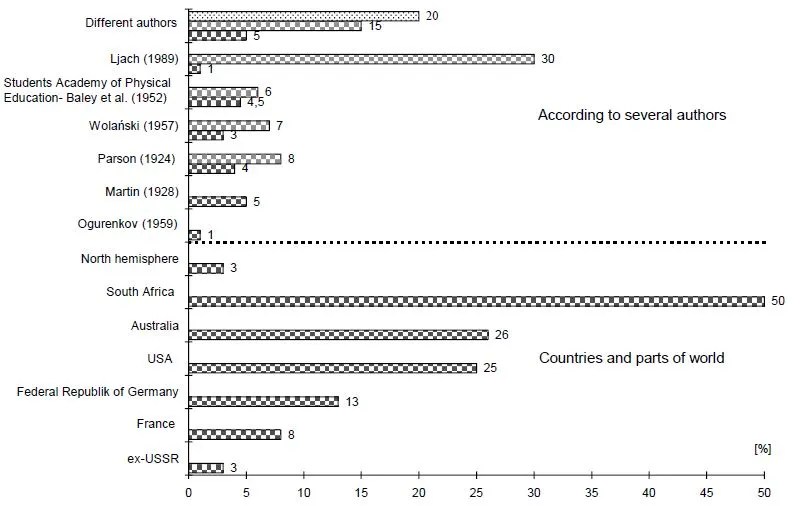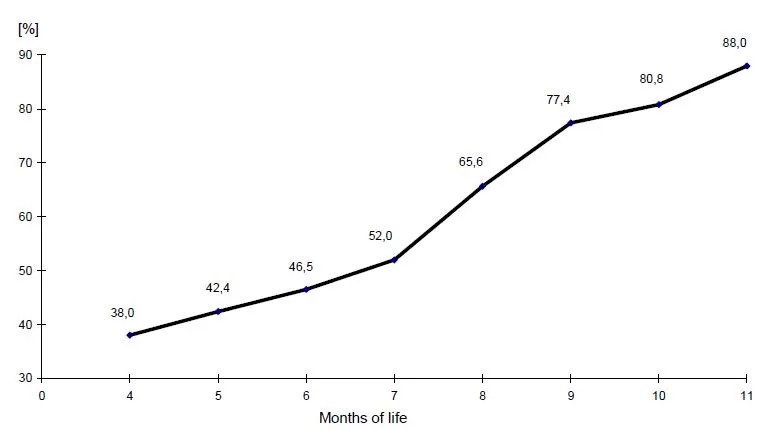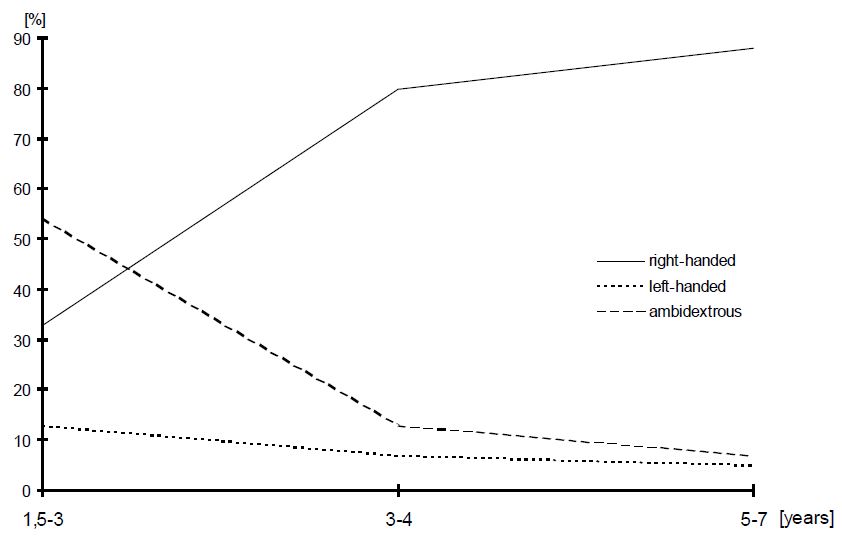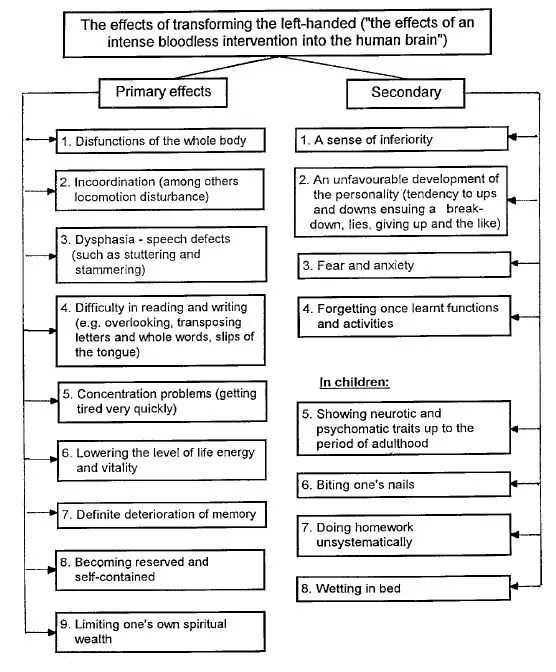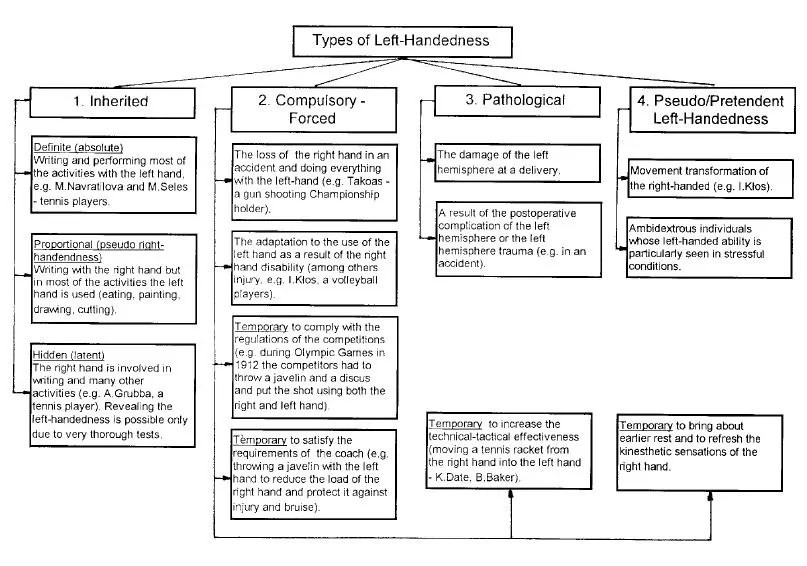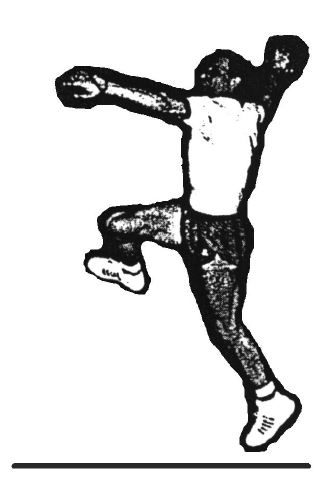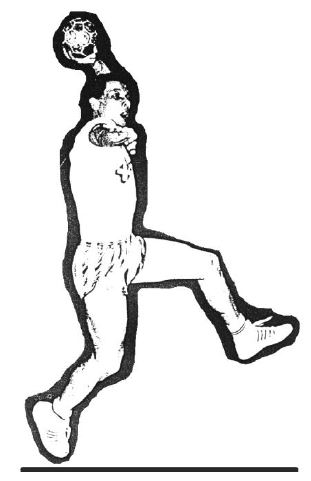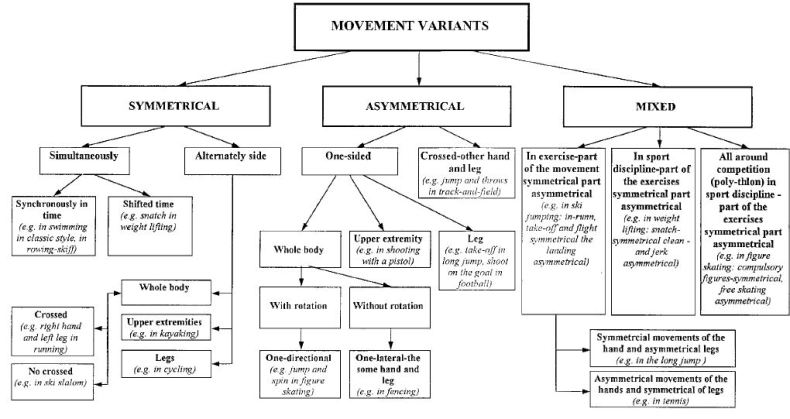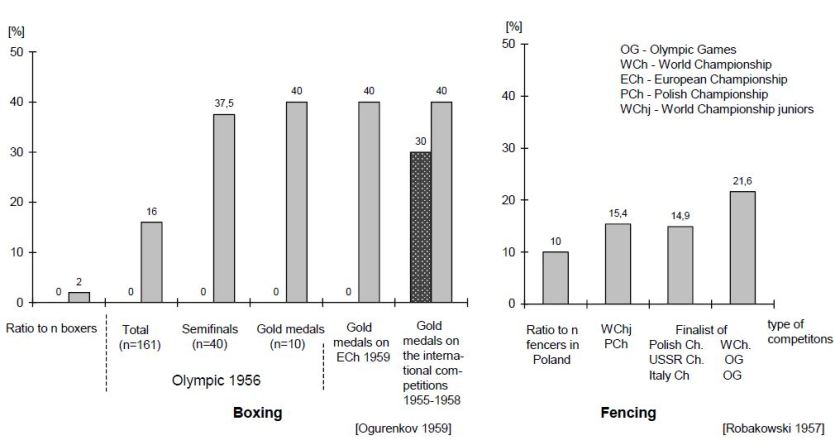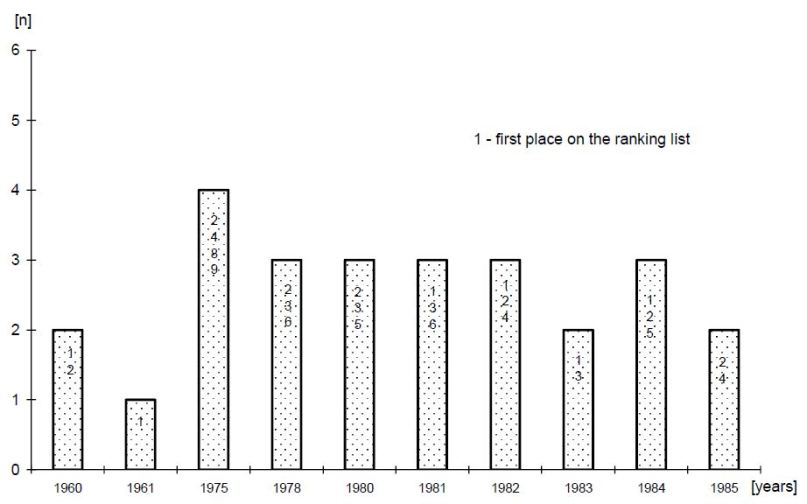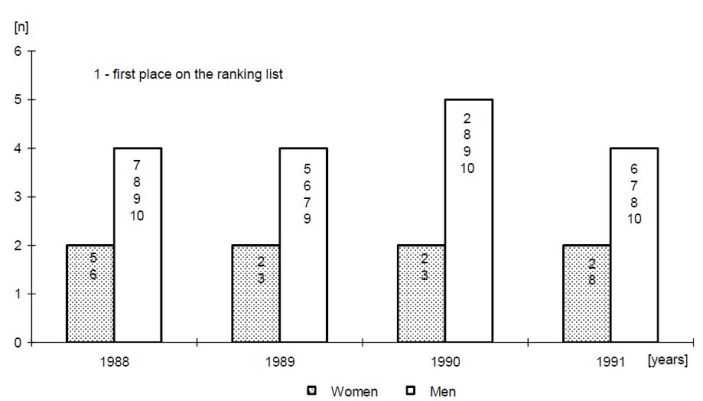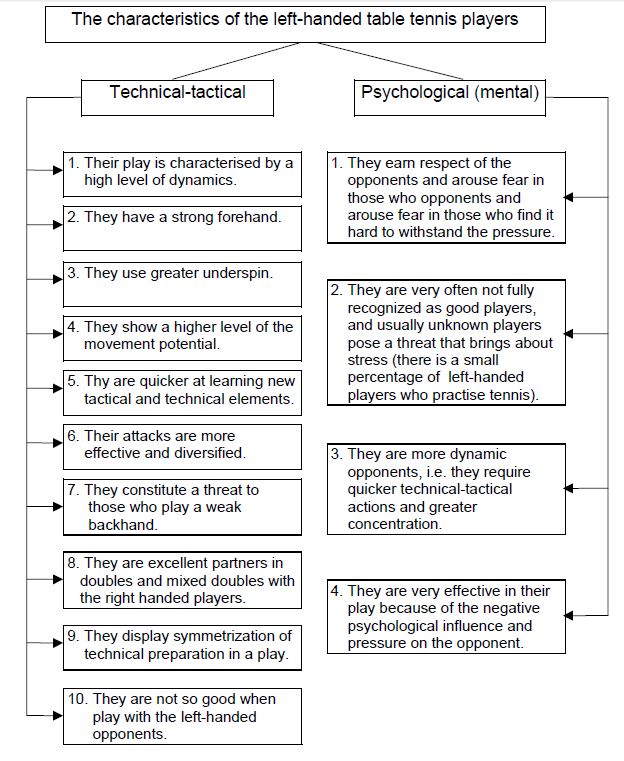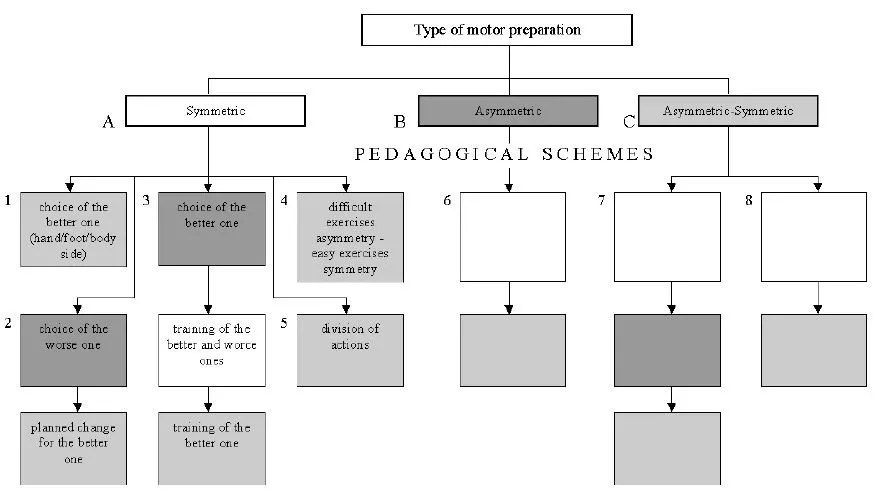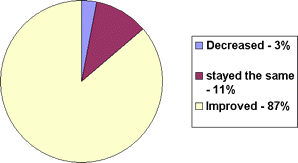Focus, Self-confidence and Self-control Transfer of Teaching Techniques from a Taekwondo Den into the Regular Classroom
ACNOWLEDGMENT
I would like to thank all of my Taekwondo family for supporting this
research. Special thanks to Master S. T.K and Master Instructor M. W for
all their teaching and implementations of reinforcing values and rules
essential for a peaceful world and creating sound minds in sound bodies.
Abstract
This research describes teaching sessions of Taekwondo in a training
hall and analyzes different types of interactions between the students
and the teacher. A group of 5 children between the ages of 7 and 14 were
observed. The children were observed for a period of five weeks. Audiotapes
and field notes of all the verbal and nonverbal moves were recorded. Parents’
surveys and children’s public testimonies during the Black Belt testing
were also used as data supportive sources. Memoirs of the researcher’s
own three years’ experience in the same training hall were recorded. A
comparative microethnographic analysis was applied to find relationships
between the teaching techniques applied in the training hall and the possibility
of transfer of applicable strategies into the classroom. The objectives
of teaching Taekwondo were observed and examined as relevant assets to
the study. Evidence shows that techniques used in the training sessions
promoted and supported behavior that could be transferred into the regular
classroom in order to enhance successful academic performance as well
as social emotional behavior.
The Study
Taekwondo, one of the oldest martial arts in history, has seen many centuries
of followers and practitioners. Based on cultural philosophies and mental
disciplines, this Korean art became known worldwide in the 1950s and developed
into a discipline and greatly appreciated sport. With the last Olympic
games held in Sydney, Australia in 2000, the first Taekwondo competitions
were introduced (Be11, 2002). Literally translated, Tae means foot, Kwan
means hand and Do means art.
This art (do) according to matialartwebsites.com has been linked to positive
children’s behavior improvement. Students who are seeking physical strength
are also in for additional psychological benefits as suggested by Dr.
Kent (2002), the founder of a Taekwondo school. From a three-year experience
in the training hall, the researcher’s own experience supports the claim
that this martial art helps to reinforce some of life’s valuable lessons
such as perseverance and self-control, and helps improve physical and
mental well being.
Research in this field has been quite abundant, but mostly in its association
with physical fitness. Studies on children involved in Taekwondo training
have mainly focused on physical changes; particularly coordination, flexibility,
strength and muscular conditioning benefits. Researchers such as Bell
and Chang (1993) closely examined the effects of this martial art discipline
on personality traits and found a high correlation between Taekwondo and
the improvement of self-esteem and confidence. Their participants also
realized that this martial art enhanced not only their physical status,
but also their mental well being by decreasing anxiety and increasing
responsibility, commitment, and perseverance.
Several researchers have focused on educational issues. Matos (2000),
in her book, studied the effects of this martial art on children with
attention deficit disorders. She believes that one serious remedy for
such behaviors is involving the children in martial arts and the discipline
of using the body and the mind in synchronization. Hunter (2002) worked
with many generations of persons with severe behavior disorders by applying
the discipline of martial arts. Hunter found a correlation between being
involved mentally and physically and improving attention related disorders.
As the researcher, a teacher by profession, got involved in this martial
art, the issue of teaching techniques and transfer of practical methods
into the regular classroom became of great interest. As schools are moving
towards total inclusion, it would be helpful to view the process that
takes place in the training hall and the possibility of transferring its
techniques into the classrooms. Consequently, this research would address
the following questions:
1) What are some of the techniques and objectives of teaching used in
the training hall?
2) How do these techniques improve focus in the children’s behavior?
3) How do they improve self-confidence and self-control?
4) Can these teaching techniques be transferred into classroom situations?
METHOD
Design
This study consisted of observations and endnotes, audiotapes of lessons,
surveys drawn from the parents, as well as public testimonies of two of
the students. Moreover, the researcher collected a file of handouts and
letters written by the Master to the students along with all the other
schedules and announcements involved in the sessions. The researcher explored
the interactions and analyzed the teaching style in order to determine
the effects of Taekwondo on the general behavior of children. These details
were used to develop some theoretical perspectives (as suggested by Patton,
2000).
Data collection and management
Since the researcher’s history with this particular training hall had
been long, measures were taken to promote accuracy on a daily basis. Prompt
recording and analytic memos were written daily. Observations were focused
on:
1. The actions during the test: primary source based on his own observations
2. The behavior and demands during lesson giving (as teachers) in class
(primary source based on his own observations)
3. The behavior coming in and going out on a daily basis (primary source
based on observation)
4. The behavior in a demonstration: based on occasional observations
5. The behavior in a championship tournament: based on memory of researcher
Additional data came from the following sources:
1. Surveys from parents intended to validate the benefits of these martial
arts, if any.
2. Documents that are distributed in the form of handouts related to activities
in the school. Some examples are: the request of the Master to check the
student’s academic performance, their chores and duties at home, their
service to the community, etc.
3. Testimony for Black Belt testing: primary source (public speech).
Other school documents or handouts mailed by the Master to the students
were also included. All these colleted documents were examined based on
Bogdan and Biklen’s ethnographic strategies (1998).
Triangulation
With the variety of sources, surveys, handouts, fieldnotes and verbal
discourse between the Master and the students, their actions and their
testimonies, the within process triangulation or as I would call it, embedded
triangulation would insure the validity of this study. It is also important
to mention that the use of participants had a dual function: mainly to
collect data, but ultimately to create a focal point for the researcher
as a synthesis to the data being examined.
Data Analysis
All audiotapes and field notes were transcribed using microethnographic
procedures as recommended by Ochs (1979) and by Bogdan and Biklen (1998).
These transcripts were recorded using pseudonyms for all participants.
The focus was on the type of instruction the Master gave and the type
of response the students were expected to produce.
Analyzing data yielded an ethnographic approach to coding and interpreting.
Content analysis was also applied to find categories and patterns in the
verbal as well as the nonverbal discourse of the Master and the instruction
given. Responses from the parents’ surveys were also used to prepare conceptual
categories related to the benefits of Taekwondo and the way they are introduced
in this particular discipline. Documents related to activities in the
martial arts school were aids in bringing focus to the important aspects
of this discipline and the basis of its philosophy. The purpose of such
analysis would also ensure the development of categories of recurrent
behaviors and hopefully generate patterns relevant to the research.
From a convenience sampling, the data shifted to an intensity sampling
where all the elements in the environment contributed to items supportive
of the research. There were various sources of data that were intertwined
and closely related to form a supportive background to the research questions.
As Patton (2003) warns “But the documentation could not have made
sense without the interviews, and the focus of the interviews came from
the field observations.”(p 307).
The training hall
The Taekwondo school is located in a suburb in Northern Kentucky serving
a population of 20,000 inhabitants. Being in a commercial center, it serves
a large area of middle socioeconomic class inhabitants. The school is
a rectangular bright hall with a red carpet in the center of the floor,
and a long table at the end. Covered with a velvet carpet that hangs to
the ground, this table serves as the Master’s quarter. On the mirrored
wall behind the Master’s table, two big white boards are hanging. On the
first board, the “Ethical rules” are written and on the other, the
“Tenets of Taekwondo”. Next to the boards, there are two flags:
the American and the Korean.
On the adjacent wall there is another bigger board with all the moves
and steps written in Korean and in English. This wall is also half covered
with mirrors. In the corners of the room, there are protection gears as
well as kicking and punching bags. In only one corner, there are some
shelves where stray belts and clothing are stored. Along the wall where
the entrance door is, there are six chairs and a bench for spectators
and visitors’ use.
Participants
The researcher focused on a group of five children ages 7 to 14. These
children have been part of this school for a minimum of 16 months and
attend the same schedule: Tuesdays, Thursdays and Fridays on a regular
basis. The observations lasted for one hour each, based on three times
per week for a period of five weeks. It is also important to note that
the researcher has been part of this school for the last three years and
that some of the fieldnotes are also based on memory of repetitive events.
Participants’ parents were given surveys to fill out pertaining to the
benefits of Taekowondo and their child’s development (Appendix A).
RESULTS AND DISCUSSION
The results of this study are organized around the issues related to
teaching methods, environmental settings , and the affect of the students
with the most salient being: focus, confidence, and self-control/obedience.
Focus
Limited Verbal Stimulation
The concept of focus is one factor that characterizes this data set.
Focus means that students are expected to stay on task, physically and
mentally, until completion. The parents unanimously touched upon the concept
of focus. One mom declared: “My son seems to stay focused better
than previously. Still has problems but much better than before. Still
stays better focused on homework and things he is doing”. Trying
to find threads that led to the reinforcement of focus in children, observations
indicate that a certain routine characterized the sessions. To better
understand the systematic pattern of representations that occurred, the
following will describe a typical day at the training hall.
Children scattered around while adults waited for the line up to get
organized. The voice of the assistant instructor, clear and firm, indicated
the beginning of the session: “4:30 class! Line Up!” .The hands
of the clock pointed at exactly the time announced. One call was the trigger
for the scurrying around of the children trying to find a place on the
lines indicated by a blue tape on the red carpet. Since ranking is an
important feature for their lining up, children focused on the belt colors
to place themselves in the line. To the right, all the higher belts lined
up starting from the Black to the red, the blue, the green, the yellow,
the white and finally the no-belts. Regardless of the age of the students,
the belt color is the only indicator of the ranking in line. In the case
of big students obstructing the view of the others, some mild rearrangements
are done by the instructor to allow both instructor (or leader of the
session) and students to see each other at all times. The second call
sounded out: “Turn around, uniform check!” which resulted in all
students looking at their uniform and checking if their belts were all
right and if all was tucked in properly. Again visual and mental focus
was diverted towards the self- check. “Close eyes for meditation!”
At this sound, spectators and all in attendance were relatively quiet
allowing for a calm atmosphere for focus to be established.
Young and old, big and small, females and males, were all unified with
one move, all on their knees, their eyes closed and in silence. A minute
later, the instructor’s voice sounded again: “Open eyes! Chariot!
Kenai!” Everyone opened their eyes, bowed and stood up. All eyes were
focused forward onto the instructor waiting for him to dictate the next
move. Day after day, one can observe the same routine with hardly any
change except for the leader of the session. Depending upon the availability
of higher belts, the leader of the session is chosen by the assistant
instructor. The Grand Master as well as the assistant instructor are always
present and available.
Imitative behavior. Self-checking
The session continued with each move being uttered verbally once, and
the students following through based on the imitation of the leader of
the session. One wrong move meant that all had to wait till that student
straightened their stance. Each move was called once in English and twice
in Korean at which point the students would repeat verbally twice and
then execute the move. There were no interruptions allowed during the
actual process unless of an emergency. There were no allowances made for
any type of interruptions that were not directly relevant to the moves
executed at that time. lf a student was not attentive or not looking at
the instructor or the leader, the Grand Master would remind them to move
their eyes back on target with a simple remark: “Where are you looking,
you?” If a student’s stance were wrong, the instructor or Master
would say: “What stance? Look!” With warm-ups, and basic motions,
twenty minutes had gone by and everyone would still be focused and moving.
“Chariot! Kenia! One minute break.” shouted the leader. Students
shook hands with the leader thanking him for this part of the session
and went out for water and a minute of fresh air.
The minute was up and all came back upon hearing the call of the leader
again: “Everyone, line up!”. For this segment of the session,
students lined up seated along the rim of the carpet. This time they sat
perpendicular to the Master’s table. Children checked on their seating
order following the ranking and crossed their legs while on the line.
If children were talking it would go on briefly until the Master uttered
the first sounds: “Black belt line up!” Then silence reigned
one more time. If ever a child would speak and not pay attention, the
Master would order him/her to be quiet but if this type of behavior persisted,
then the Master would order: “Push up ten times!” The child would
execute the push-ups and verbally repeat what he/she should have been
doing: “I am quiet.” If that behavior persisted, the Master
would require that they leave the training hall and come back after a
few minutes or when he permitted them to. If they were too young to be
left alone outside, he would ask them to sit by him, alone in front of
the group. Such types of punishment were very consistent but hardly ever
administered, as children seemed to follow rules to avoid such confrontations.
When orders were called, students executed. When the Master interrogated,
students answered with: ”Yes Sir! No Sir!” When he asked a question,
he expected a simple positive or negative answer. There was zero tolerance
for any lengthy or hesitant “I am not sure” and “I don’t care”.
If the child was really too young, the Master would say: “I talk
to parents” and that would solve the timely question. During all this
activity, the children would be totally focused on the proceedings of
the session.
Physical environment: Memory oriented
The simplicity of the physical environment of the training hall consisted
of limited visual aids and visual stimuli. The human element consisted
of the student body, the Master and instructors, and finally the visitors.
However, focus on the self and the instructor or the leader were the keys
to all the activities. At times, when spectators would be noisy or talking,
the students were not actually permitted to pay attention to them. If
a child’s gaze would wander off, the Master would catch it and would remind
the student again by asking them to repeat what had just been said or
done. One salient feature of the training hall was the obvious fact that
there were limited visuals to divert the attention of the students off
the instructor. The hall has one wall with mirrors and one wall where
all the white charts with terms in English and in Korean were written
in big script for everyone to see. The students were expected to memorize
these terms within the first six to eight months of their training. Besides
these two walls there were no other visuals. Children either stared into
the mirrors or just straight ahead. With limited verbal and auditory stimulation
and limited instruction, these children appear to have the ability to
keep their focus and carry through the session without any complications.
Duties in the training hall and at home
While answering surveys, parents conveyed similar ideas about the effects
of Taekwondo. They all mentioned the fact that their children had acquired
more focus, knowledge, and responsibility and stayed longer on tasks.
A mom wrote: ”The strength of Taekwondo is in developing physical fitness,
discipline, and concentration. The home chores chart promotes tranquility
at home and helps children focus on their duties and homework”. By
mentioning the home chart, she meant that Taekwondo teaching did not stop
at the threshold of the training hall but went beyond it to the home and
the society to which the student belonged. The home chart is one of the
handouts that the Master actually sends home every month. It is a list
of all the items that children are encouraged to accomplish as duties
at home and at school and in the environment. It is the Grand Master’s
plan as a follow-up technique of the disciplining of the mind as well
as the body. These charts show chores the children are supposed to carry
out at home, to help their parents, obey the rules of the household, and
do their homework. For this particular mother, this chart seemed to assist
her in keeping things under control. When the children completed this
chart monthly, they would bring it back and receive a green star as a
reward in front of the student body.
In order to insure continuity of completing duties and achieving focus,
the Master has the training hall set-up in a way that is intended to promote
helping students to become responsible and focused. The first duty the
children needed to attend to as they entered the training hall was to
1) bow, 2) take their shoes off, 3) pickup their student form, 4) and
head directly to the assistant instructor and the Master. Then they would
hand in their form for absence using both hands and bowing to the Master
who would usually be sitting at his rectangular table, parallel to the
mirrored wall. Observations reveal the speed at which all these routines
were learned. Some children would go on to do some stretches or if they
were too young, they would find an adult to cling to or talk to. Those
who would come in with their parents or caregivers would just sit by until
the session began. During each observation conducted, I saw the five subjects
with their parents and their instructors. Once they entered the training
hall, parents never interfered with their children nor the Master, unless
for some urgent business. Parents also seemed to understand the rules
of the game and knew how to delegate power to the Master once in his training
hall. They behaved like the rest of the students, for example, they would
take off their shoes as soon as they entered the hall and would not step
across the red carpet that was only meant for the students.
Respect was another factor that was greatly displayed in the training
hall: respect of students to each other, to the parents, the spectators,
and finally the things available in the training hall such as punching
bags, mats, and sparring gear. In all cases and at all times, one way
of showing respect to the Master is that whenever he came into the training
hall, and regardless of the group’s activity, everyone stopped and turned
facing the Master, bowing and shaking his hand with a greeting. Courtesy
was exhibited in many ways by all the present in the hall. Parents have
learned to bow to the Master too and did so when appropriate. They had
also learned not to interfere and to keep to a minimum, the level of noise
and distraction while waiting in the training hall. As for the students,
the lower belts have learned to bow for the higher belts or for the Black
belts, to listen to their teachings, and to respect their elders.
Among other duties, students were supposed to help the younger belts
acquire the routine of respect and the duties of the training hall. In
some instances, when the first afternoon group came in, one of the students
would take the responsibility to vacuum the carpet and turn the fans on
to freshen up the place. There was also a strong feeling of a tightly
knit family gathering in the training hall that was more than just a Taekwondo
school for learning. As one of the students involved in this study testified
during his black belt test: “Master K. made us feel like a family
and I like it when we help out with setting the hall for the parties and
the Christmas events. I also helped my Mom in buying stuff for the Christmas
party last year and I like that”. Sharing responsibilities and taking
part in all types of events that the Master provided in his training hall
made the students feel like one big cluster with equal opportunities of
leadership. When traveling to tournaments or demonstrations, the Master
delegates duties to all and assigns tasks in a way that makes students
feel responsible towards themselves and everyone else in the group. One
way of being in a group is staying together in one hotel or traveling
from the training hall in a carpool. When the students reported to others
about their experiences, there were signs of having had a great time and
a valuable experience.
Confidence
General knowledge
Another salient feature of the data, especially collected from the surveys,
was the issue of confidence. Parents mentioned that their children (3
out of 5) who started as very shy children can speak up and talk in public
and are showing signs of confidence. One mom declared: “He has more
confidence and shows responsibility and knowledge at home and at school”.
Another parent declared that there has been a gradual increase in responsibility
and knowledge. A third parent wrote: “During the last parents ‘ conference,
the teacher told me that my daughter has changed drastically this past
year. She is strong and shows confidence in her work”. Another tangential
testimony of confidence was displayed during the black belt testing of
two of the students included in the study. For this promotion, every student
has to prepare a public speech telling about his or her history in the
training hall with all the activities and the participation that would
have taken place. In the testimony, one student said: “I was very
scared when first started, because everyone was bigger and stronger than
I was…but now I am more confident and am not scared of learning new
things…At school my grades are better”. Both students indicated
how well focused and confident they had become and attributed these results
to the discipline of this martial art.
According to the students’ testimonies, public performances and demonstrations
at schools and in different locations have helped them tremendously. They
have actually become more confident and have acquired a great amount of
knowledge. As a matter of fact, this testimony itself was a public speech
and both students were speaking out loudly and assertively. Their participation
in demonstrations and exhibits as well as in tournaments has shaped their
self-esteem and self-image, according to some parents’ declaration.
Another aspect of the Taekwondo experience that seems to foster confidence
is the experience of teaching that all students eventually have a chance
to lead. Once a month, the assistant instructor would choose a leader
for the session to teach. One of the students mentioned the pride he took
when it was his turn to teach: “I feel great when I can teach the
class, it makes me proud”. Another parent also declared: “I never
thought I would see my child teach the class and he loves it now”.
The Master sometimes chooses a leader to teach the class on an hourly
basis. Regardless of the age of the child or the students, the belt one
carries determines one’s seniority and thus the privilege to teach goes
to that individual. This feature of the session has been a great help
in building confidence in the students. Leadership, clarity of directions,
teaching skills are all segments of this experience in the training hall.
When a student teacher faces the others and gives directions, the imitation
of the actual physical move has to be mirror imaged. That too requires
a tremendous amount of focus and confidence. It also requires that the
student teaching take care of the beginners and give them a special assignment
or assign other belts to take care of them. There are also instances where
the children play the role of judges as they are observing the higher
belts performing their forms, their breaking techniques, or their sparring
competency. They have to give scores and be fair as well as show evidence
for their own decision.
Self Knowledge
Verbal clarity and identity assertion were coded as components of confidence.
These two factors were also observed while training in this school. I
have observed the students standing up and answering the Master when being
asked questions. The Master’s message is obvious all throughout the sessions.
To start with, he always encourages pupils to introduce themselves to
each other and to the new members. He also demands that they speak up
in front of a public and express themselves clearly and loudly. If they
sounded whiny, the master would imitate their sound, and students would
actually laugh at it. Day after day, sessions had been conducted with
many spectators in the audience. Parents, visitors, occasional curious
individuals would stroll in to see what was happening. Most of the time,
during my observations, it felt like each session was a public performance,
and one had to be at one’s best to promote oneself and this art.
While testing, introducing oneself meant that the student would state
one’s age, the length of training in the hall, and introduce one’s family.
This exemplifies self- knowledge and the acknowledgment of one’s personality
and presence. While demonstrating in other locations, students are encouraged
to state their name, their martial art school and their Master instructor’s
name and school address. All this information is an assertion of the identity
of the student in Taekwondo. It is almost identifying oneself with a group
or a family. Students also must memorize their Master’s history and all
his achievements. For example: my master is seventh Dan in Taekwondo,
seventh Dan in Hapkido, and sixth Dan in Judo.
Knowledge was also an observed and coded component of confidence. Knowing
the Taekwondo terms both in English and in Korean is also part of the
training of Taekwondo. Memorization is enhanced by repetition and everyday
routine. Students seem to demonstrate pride when they are able to say
such foreign sounds without even knowing how to write or read them. Once
well acquired, one of the objectives of Taekwondo is teaching the students
a sense of honest and integral leadership. In the training hall, and on
the wall, there is an automatic message strip that comes on and fades
away, all throughout the sessions. The sign reads: “Yes I can attitude”.
It is the Master’s biggest objective and perpetual plea during the lessons.
One would hear him saying: “No babies here! Yes I can! Yes, I can!”
Students are then asked to repeat and assert that they actually can and
he encourages them to try and promotes achievement in the hall and at
home. With this leadership, students begin to understand their capacities
and try to achieve higher goals.
The Master never forgets to include the student’s personal information
in the monthly newsletter he sends to his parents. He acknowledges birthdays,
achievements, and rewards of good performance in school. When a child
brings a report card, it is read aloud to everyone and the Master rewards
the student with a blue star. Award giving is also a ritual in the training
hall as the Master recognizes the good deeds of the students and encourages
them through words of praise. There are different colored stars for different
achievements and promotions in the school as well as the Martial arts.
Students also are encouraged to share the extracurricular activities they
are involved in: music, art, sports and others. For good achievement,
rewards are always awaiting and stars are given out as acknowledgements.
Physical strength
While reinforcing all the mental disciplines of Taekwondo, physical strength
is another display of observed confidence and perpetually the target.
The first items to be memorized in the training hall are the physical
benefits of the martial art: ” One can develop good coordination,
build strength, increase flexibility and improve cardiovascular conditionings
”. These benefits are written in large print on the board on one of the
wails. Once memorized, the Master insures the repetition of these benefits
in order for the students not to lose sight of the objectives and reason
of their presence in the training hall. Moreover, as children are acquiring
all these benefits, parents have commented on other aspects of their children’s
development. One mother said: ” my boys have more endurance and show
strength.” Some parents noticed the immediate change in weight of
their child who was a bit overweight.
Beginners from day one join the entire group in stretching and jumping
and kicking as well as breaking boards. Then, immediately, peer teaching
and coaching is put in practice. During the observations, one sees children
imitating other older belts and trying steps that are even harder than
their own level. These aspects are the supporting aids that the Master
uses in order to promote confidence and strength in his students.
Self Control and Obedience
With the discipline and the tight regimental approach in Taekwondo comes
confidence that I have classified under self-control. Most of all, one
would speak of self-control as one’s knowledge increases about one’s own
powers and strengths. One of the parents actually declared that her child,
who used to cry and moan about every little fall or gash on the knee,
has become stronger and acts more like a grownup. Another mother wrote:
“my children used to fight and hurt each other. Now, they understand
that they should not be doing that. They also know the difference between
play and causing real pain to each other”. In practice, the Taekwondo
sessions daily end up with a review of all the rules that govern the martial
art of Taekwondo. One can hear the students yell:
Ethical rules
Loyalty to nation,
Obedience to parents,
Confidence in friends
Don’t retreat from enemy attack
Refrain from senseless killing
Tenets of Taekwondo
Courtesy,
Integrity,
Perseverance,
Self-control,
Indomitable spirit,
Sound mind in a sound body.
It is the Master’s final message that he usually sends with the students
before they leave the training hall. These rules are to be practiced not
only inside the training hall but also at home and in the student’s environment.
While teaching students to spar, rules are extreme and stringent. Students
are not allowed to hurt each other, but to demonstrate fighting styles
with knowledge. The rules are to be followed and kept. From the surveys,
a parent wrote: “my children are able to listen to me and keep from
bothering each other as tranquility is restored at home with the rest
of their siblings”. In the hall, children keep their hands to themselves.
They are not allowed to play rough or use what the Master calls “horseplay”.
With this type of discipline emerge self-control and positive attitudes
towards other human beings. Respect, knowledge, courtesy, awareness are
all foci of the Master’s teaching, and are crucial ingredients for self-control.
Acquisition of physical and mental powers promotes confidence and self-control.
As children start learning their breaking techniques, the Master always
urges them to stay modest and humble. Breaking the wood seems to have
a great effect on children. It informs them that they are becoming stronger
and stronger. However, the Master resents boasting and actually makes
fun of people who do so. One would hear him say: “No show off time!
Humble you stay!” Though children are always showing excitement when
they do break wood, the Master is always requesting that they first try
their level without boasting. He also urges obedience to the advice of
higher belts. He says: “No big head!” For techniques like Judo falling
and the use of self-defense, the Master talks to parents about the dangers
of simple mistakes causing severe and tragic physical damages to students.
He always advises that students never try these techniques alone until
they are able to perfect the motions and till the Master agrees that it
is permissible to do so. The Master always talks to parents and greets
the parents at all times. This act seems to keep the parents involved
in all their children’s progress regardless of the student’s age. With
this, he insures obedience, promotes self control and urges the focus
of the students
Implications and Discussion
The first implication is the revival of confidence in the physical education
hours spent at schools. For some children, these would be the only hours
they spend actively involved in sports and other physical activities.
Parents in modern societies, who are busy working, find it hard to accommodate
their children after school in activities that would promote a healthy
body. First, it is time consuming and secondly it is costly. Thus less
and less time is allotted for such physical fitness. Looking at this martial
art would revive the confidence of building a healthy body for healthy
living. Physical education teachers themselves would regain confidence
in what they are promoting in making of “sound bodies” and thus
“sound minds”. In one of the dominant websites of academic Taekwondo
(www.academictaekwondo.com), the martial art program has been adopted
by the academic curriculum and the outcome has had a phenomenal effect
on the mental and psychological benefits of students. Parents and educators
have testified to its effects on children and the possibility of incorporating
it in the regular classrooms. Keeping the objective clearly afloat, the
academic curriculum would then stress this vital component for the healthy
development of the students. To start a day with some recollection, some
physical fitness will undoubtedly create a great predisposition for the
process of learning and acquisition.
Another psychological implication of practicing martial arts is the promotion
of values. Knowledge, perseverance, self-confidence and encouragement
would be greatly promoted and reinforced through such teaching strategies.
It might be helpful for teachers to use the “Yes I can attitude”
motto as a great concept to promote confidence and increase academic production.
By reminding the students that they are able to promote themselves and
that they are capable of reaching higher levels constantly and by showing
them the way to success, teachers may be able to promote higher learning
and create better individuals for future employment. Though this might
appear totally behavioristic, the reward system applied in Taewkondo never
seems to fail. A simple word of praise, a pat on the back, a star could
go a longer way than just criticism and undermining students’ achievement.
Though studies on academic performance and their relation to Taekwondo
have been minimal and hard to locate, some techniques might be worthwhile
trying in classrooms. Creating reasons for learning might give a concrete
meaning in the real life application, for students as they try to understand
and learn about a certain subject matter. Self-knowledge and general knowledge
ensue from above practices, as students become leaders in their fields
Another possible activity for application in the classroom is applying
teaching roles to students that might also become a very helpful aid in
the learning process. Regardless of the capacity of the child, the experience
of leadership seems to have helped students in the training hall. The
logic is that if students do not know what it means to be a leader they
will never know the skills they need to become one. Thus making them leaders
occasionally gives them a sense of accomplishment and creates a great
learning opportunity especially for those whose self-esteem is suffering.
Galea (2001) emphasizes the benefits of Taekwondo on the self-image and
self esteem of the individuals. This helps to promote success by promoting
self-esteem and self-respect.
Setting up of the classroom in a way where the visual stimulation would
be limited and only what needs to be memorized is visualized may also
be a great feature to promoting focused learning. The use of organizational
charts and the application in the classrooms of related skills can also
be a great guide to students. Reminding students of their duties at home
and in the society might create continuity in their lives where they become
representatives of their own learning and their learning establishment.
Consequently, it might promote the personality of the child by reminding
them that they represent their knowledge at all times in the society.
A related issue is the example of imitation and duplication of teachers’
behaviors.
Finally the constant visual reminder represented by a written rule on
the board might also be helpful. Respect of others, of nature and of society
is of great value. It is a great tool for the improvement of relations
in the classroom and outside. Self-control, courtesy and humility are
additional values that our students might need to manifest and to apply
for reaching harmonious living with other peers. In his Taewkondo academy,
Master Kent (2002) emphasizes self control by teaching semi-contact sparring,
he declares that: “executing a fast strong punching or kicking technique
and pulling it just short of your opponent’s face and body is a higher
achievement than just blasting your opponent’s face”(pl).
Incorporating those values by posting them on boards and by modeling such
behaviors might help create a safer and more peaceful society.
Personally, I find it reassuring to know that the philosophical features
of martial arts do not teach our children to act violently but to promote
long-term values and establish physical as well as moral strength. Parents’
testimonies from various Taekwondo websites have emphasized the values
that remain in children even after the punch and kick is long gone (courtesy
martialartswebsites.com):
“In a short period of time Brittany showed an increase in self-confidence
and a whole new attitude in the respect she has had towards adults and
her peers. Her grades in school continued to be excellent along with
all positive comments from her teachers.”
– Brittany’s Mom“Chris’ confidence has increased as a result of her achievements
in Taekwondo. When she carries out her Taekwondo philosophy over to
other parts of her life, she is more successful. Her level of confidence
has directly affected her success.”
– Christine’s Mom“We are very proud of Devon and feel he has incorporated the core
values of a “Black Belt” into his overall personality. He consistently
demonstrates self-confidence, an overall positive attitude, respect
for others, strong academic achievement and self- discipline and control.”
– Devon’s Parents“I can see that many of the philosophies you have taught my son
about respect, confidence and composure have stayed with him outside
of Taekwondo training”
– Matt’s Mom“We have watched our Son progress both physically and emotionally
into a more self- assured young man. We are not so sure he would have
made such astonishing progress without the discipline, fortitude and
patience, to name just a few qualities this art has taught him.”
– Christopher’s ParentsJeremy has exhibited leadership qualities both in and out of his classroom.
He has maintained a very good grade average, completes his assignments
and associates with friends who share the same values he has been taught
in Taekwondo.”
– Jeremy’s Dad
Appendix A
Parents’ Survey/ Questionnaire
“By completing this survey I indicate my consent for my answers
to be used in this study”.
Researching the effects of Taekwondo on children, the purpose of this
questionnaire is to clarify how this type of martial art influences your
child’s behavior socially, emotionally and physically. Please take a moment
to fill in the survey. Upon completion, I appreciate if you could insert
it in the yellow envelope (with G.C.SATHER) typed on it. The envelope
is tacked to the bulletin board to the left of the entrance into the training
hall. To insure anonymity, please do not write your name. I would also
appreciate if you could try to have it in by the end of the month of February.
-My child started Taekwondo on:
-At school, he/she
Socially:
Physically:
-At home, he/she is
Socially:
Physically:
Academically:
-Improvement has shown
In School? How?
At home? How?
-Does your child like Taekwondo?
-Do you like Taekwondo?
-How do you feel Taekwondo has helped your child?
-What are the strengths of Taekwondo, in your opinion?
-Would you advise it to other parents? (Comments are appreciated)
Thank you
Grece Chami-Sather
References
- (3rd edition). Boston: Bogdan, R. & Biklen, S. (1998). Qualitative
researching education Ally &Bacon Bell, R.C and Chang C.M (2002).
The exploration of the effect of Taewkondo training on personality traits.
[Electronic version}. The Sport Journal, 5(3). Retrieved March 8,2002
from http://www.thesportjournal.org/2002joumal/Vol5-No3/taedwondo-training.htm - Galea, J. (2001) http://www.umaskarate.com/information/why.html
- Hunter. (2000,Spring). Focusing on children with ADD SuzannWancket,
Martial Arts instructor .ADD Action group newsletter 4(2). Retrieved
from http://www.addgroup.org/S00News.htm - http://www.allamericantkd.com/aat/index.cfm
- Kent, H. (2002). Christian Academy of Martial Arts.http://www.karate.tvheaven.com/
- Lecompte, M.D. and Schensul, J.J. (1998). Designing and conducting
ethnographic research. Ethnographer ‘s toolkit. Thousand Oaks, CA: Sage
publications, lnc. Matos, C. and Matos, C. (2002) Pants with pockets
and other tips on managing an ADD/ADHD child. Retrieved Dec.16, 2002
from http: www.addgroup.org. - Ochs, E. (1979). Transcript as theory. In E. Ochs & B. Schieffelin
(Eds.), - Developmental Pragmatics. New York: Academic Press.
- Patton, M. Q. (2002) Qualitative research and evaluation method (3rd
edition). Thousand Oaks, CA: Sage publications. - Strauss, A.L. and Corbin, J.M. (1998). Basics of qualitative research:
Techniques and Procedures for developing grounded theory (2nt ed). Thousand
Oaks, CA: Sage Publications, Inc.

